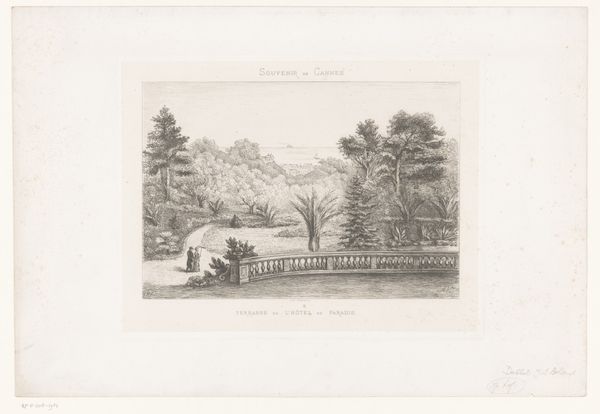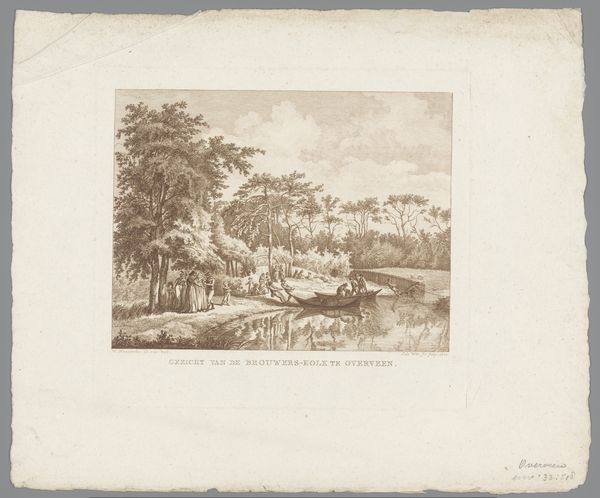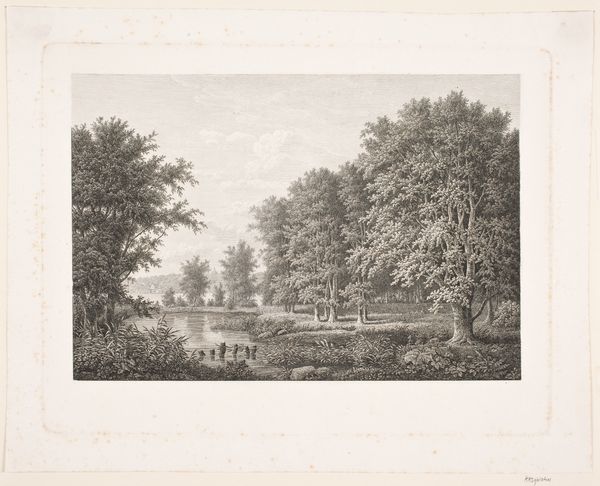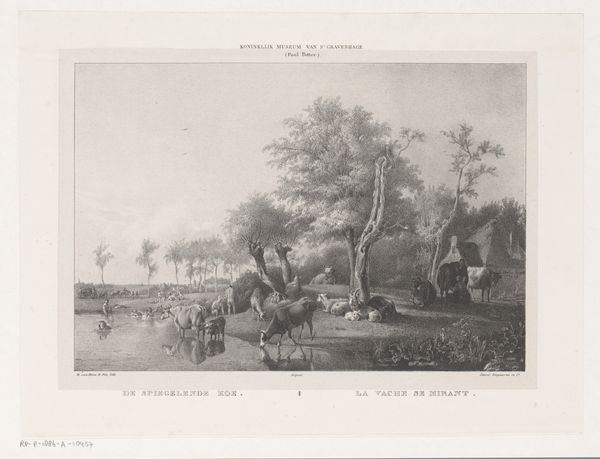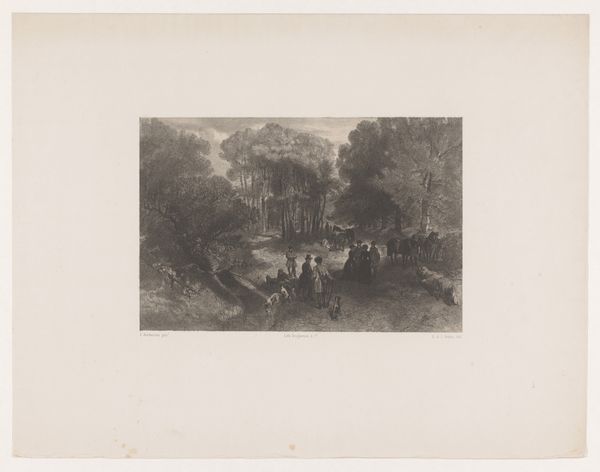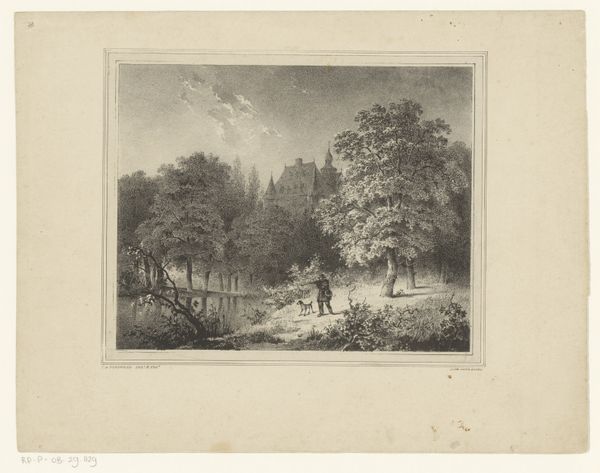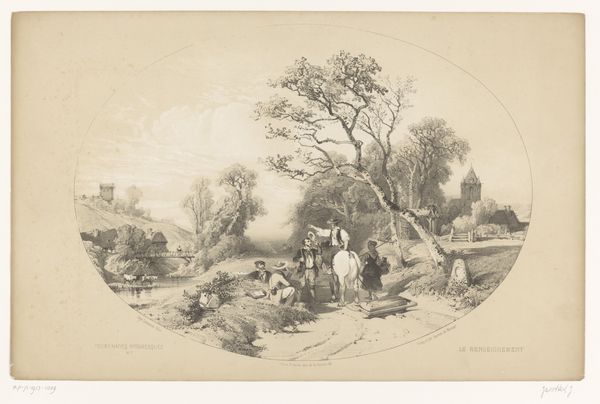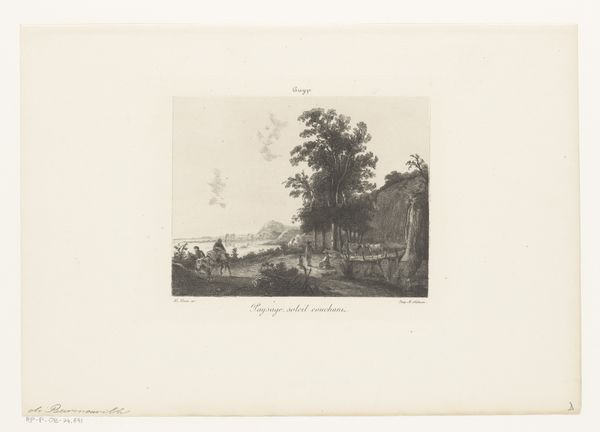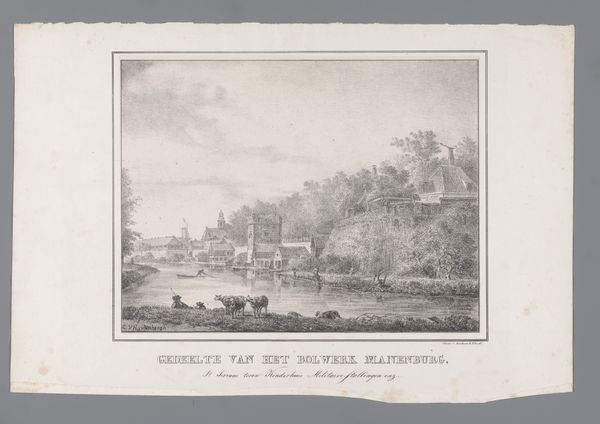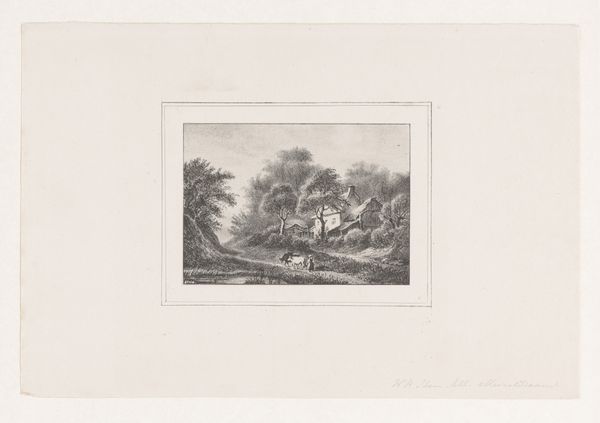
lithograph, print
#
lithograph
# print
#
asian-art
#
landscape
#
romanticism
#
orientalism
Dimensions: height 340 mm, width 510 mm
Copyright: Rijks Museum: Open Domain
Editor: This is Paulus Lauters’ "Gezicht op een waterval in Goeroe-Goeroe te Ambon," a lithograph from between 1843 and 1845. I’m immediately drawn to the scene's stillness, like a moment suspended in time. How do you read the symbolism in a landscape like this? Curator: The enduring allure of landscapes, especially those from faraway lands, lies in their ability to project cultural fantasies and aspirations. In Lauters' lithograph, we see the "exotic" East filtered through a European lens – what visual cues suggest this influence to you? Editor: Well, the details seem precise, but also maybe idealized? The people feel a bit… placed, rather than naturally integrated. Curator: Precisely. The waterfall itself acts as a powerful symbol. Water often represents purity, renewal, the subconscious. Yet, within the context of Orientalism, what narrative purpose might it serve to emphasize the raw, untamed power of nature in this "exotic" location, distinct from a regulated Western context? Editor: I see – perhaps reinforcing a sense of Western mastery or, conversely, the alluring, untamable mystery of the East? It also evokes themes from Romanticism. Curator: Indeed, the aesthetic leans into the Romantic era, amplifying sublime nature and human’s relationship to it. It's not merely a picture; it's a staged encounter imbued with layered meanings. Is our understanding changed knowing it was produced during Dutch colonial times? Editor: Absolutely. That context reshapes the entire work, making it a document of power as much as a landscape. It's more than just a scene; it's a statement. Curator: And through understanding those visual cues and their contexts, the image speaks volumes about its historical moment, and continues to resonate in ours.
Comments
No comments
Be the first to comment and join the conversation on the ultimate creative platform.

